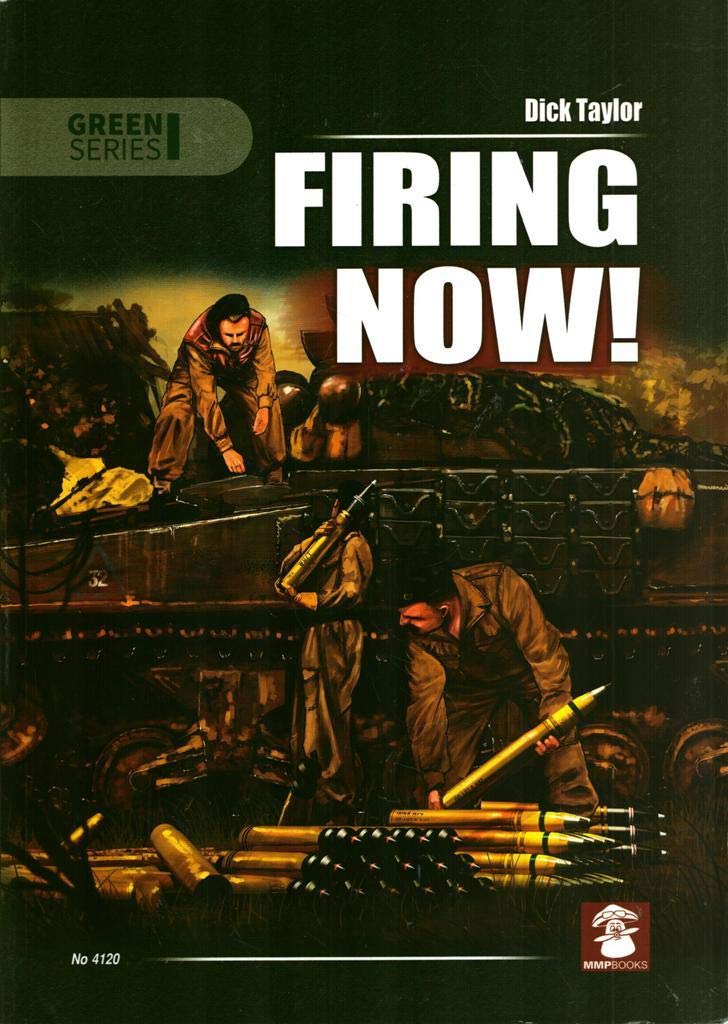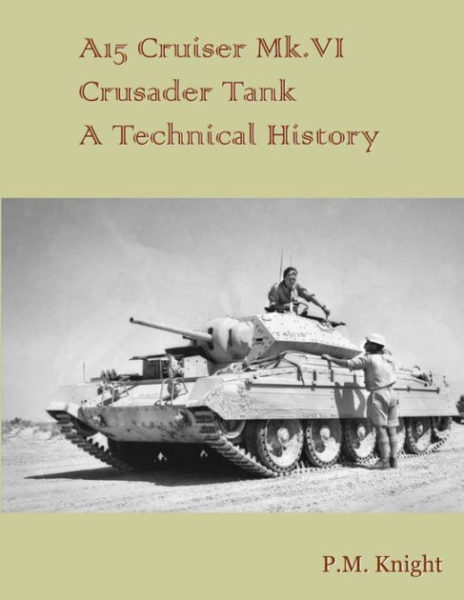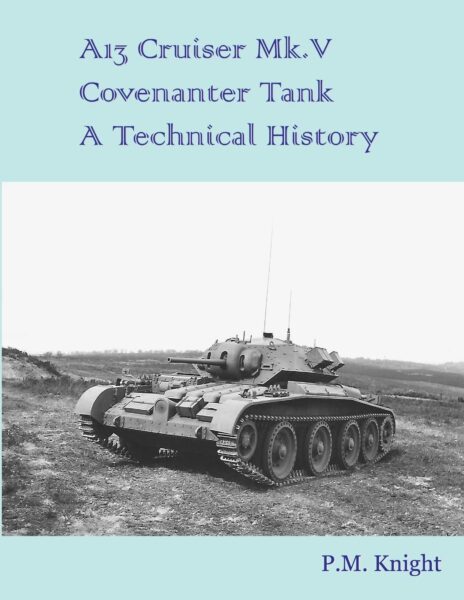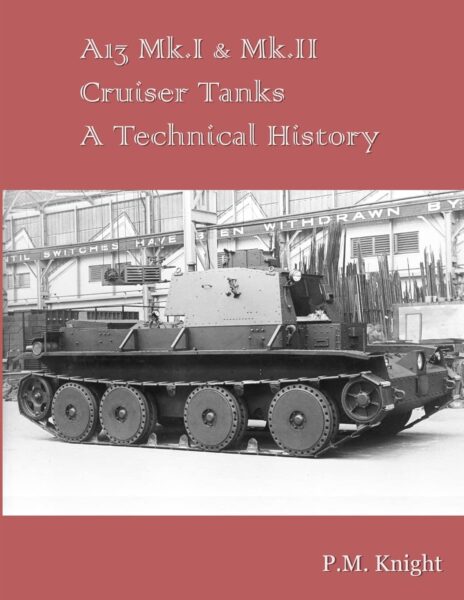Further to my post in 2022 about The Confusion of British 2pdr & 6pdr HE in WW2 I finally acquired a copy of Firing Now! Tank, Anti-Tank and Self-Propelled Artillery Ammunition UK & USA 1939-1945 by Dick Taylor in late 2023 which I had been looking for for some time (the limited amounts of second hand copies were extortionate prices, but there seems to have mow been a second printing or a new POD edition). My copy of A15 Cruiser Mk. VI Crusader Tank – A Technical History by P.M. Knight had also arrived several months earlier in 2023 and has added to the information. The effect is these have added some data to my research in the original post.
I’ve also recently (as at end of 2023) received A13 Mk.I & Mk.II Cruiser Tanks – A Technical History and A13 Cruiser Mk.V Covenanter Tank – A Technical History (both by P. M. Knight again) but have not yet mined these extensively for any potential additional data – as I have not opportunity to take this further in 2024 I’ve decided just publish what additional info I had collated in the meantime from the first two sources above.
Note the original British 3pdr Tank Gun (as used in the Medium Mk.II, etc) had APHE as its anti-tank round and this is why the 2pdr initially had APHE, it was simply ‘following suit’ with the existing British army doctrinal requirement of the time.
In Firing Now! Tank, Anti-Tank and Self-Propelled Artillery Ammunition UK & USA 1939-1945 Dick Taylor acknowledges the presence of the APHE for the 2pdr and that Hadfields’ had switched in November 1939 from all APHE (1 million rounds) and no AP to all AP (6 million rounds) and no APHE production. This was due to a 1938 specification change requiring penetration of 40mm of 30º RHA at 1,000 yards replacing the original specifications and the requirement to only penetrate 25mm of 30º armour at that range. Note that the final APCBC rounds could achieve 50mm+ and the APSV (Little John squeeze bore) 72mm.
Dick Taylor also refers to the fact that in addition small numbers of HE rounds were available (the implication is pre-war or 1940-ish) but they were never issued to tank crews (this leaves an implication towed Anti-Tank Guns might have received very minute quantities, possibly pre-Dunkirk?) – but it apparently had an extremely small HE charge so presumably wasn’t very effective. It was reportedly an improvised round using a Royal Navy 40mm HE shell (I’m guessing from the Pom-Pom AA?) attached to a 2pdr cartridge case – curiously this seems to be a common theme as see also my previous post about the different improvised Australian & NZ HE rounds in 1942 from 40mm Bofors and US 37mm HE shells.
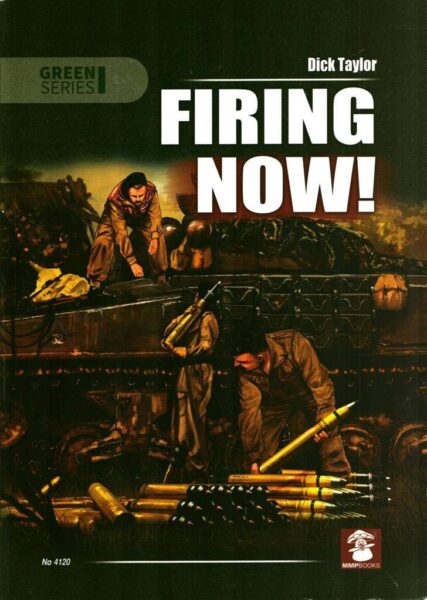
Back to the 2pdr – for the 2pdr a SHELL HE-T Mk.1/T (and 2/T and 3/T) are listed as ammo types but the dates of manufacture and availability aren’t listed and there is no commentary on these specifically. There is reference to Armoured Car Crews in NWE removing their Little John adapters permanently to allow them to fire HE (its well documented that official doctrine said a British A/Car Troop of 2 Armoured Cars and 2 Scout Cars should have 1 Armoured Car with the Little John Adapter for AT fire and one without it to for general support via HE – so this suggests some troops may have just removed all LG adapters and fired the APSV rounds without the adapter).
APCBC – End of 1942 or Early 1943 – I previously posted that APCBC rounds which increased penetration about 15% on paper (at 500 yards about an extra 8mm ‘perforation’ over AP or APC) and probably was more pronounced in battlefield conditions. Production started end of 1942 so issued sometime early 1943 I expect (before end of Tunisian Campaign) – Firing Now! states trials started June 1942 and officially issued from September 1942.
APSV (Armour-Piercing Super-Velocity) – January 1943 – I previously posted that the LittleJohn Mk.1 enters production; in May 1944 the Mk.2 replaces it in production. The LJ almost doubles the penetration of the 2pdr compared to the original “AP Shot” (or it’s APC variant) – Firing Now! states trials started August 1942 and officially issued from January 1943, with improved Mk.II round 2-3 months later. The ‘squeezed’ calibre was 33mm.
Addition info is presented in A15 Cruiser Mk. VI Crusader Tank – A Technical History by P.M. Knight including that 2pdr firing trials with APHE was carried out against captured Italian Tanks in August 1941 as evidence had shown at Beda Fomm earlier in the year that penetrations with APHE had appeared to kill the entire crew due (to the bursting charge). It determined the 2pdr APHE could penetrate the Italian tanks at 900 yards and it was debated whether to lobby the war office to put the APHE round back into production, as it was thought the round would also still be useful against German tanks at about 600 yards for applying a similar coup de grâce effect. Apparently 7th Hussars discovered a batch of APHE in the Middle East (that had not been made inert) just 3 weeks before Operation Crusader commenced.
Yet another report in March 1942 on AFV Ammunition (Col. Blagden) emphasised the need for a 2pdr capped AP round (akin to the US APC of the M3 Stuart) to deal with the German face hardened armour, and for both 2pdr and 6pdr guns an AP round with bursting charge akin to the German 5cm one and a HE shell for dealing with anti-tank guns and soft targets.
A Quick MG Rabbit Hole
In January 1942 post-Crusader the Barlow report stated (based on examination of captured. destroyed or abandoned 88mm Flak and 37mm PaK35 and similar) that British Tank BESA machine guns urgently needed ammo to be AP rounds (rather than ball so they could penetrate gun shields), and that a proportion of APHE rounds should be carried for the main armament (as the explosive charge would enhance performance of hits against guns) – both these measures being specifically to deal with artillery (incl. FlaK and ATGs). A second report (Blagden) in February 1942 echoed both of these 2 requirements.
In 1942, as an aside, an interim solution for the BESA in the Middle East was that captured German 7.92mm AP and AP Tracer ammunition was issued to tank units and ammo belts for MGs were repacked with 1 round of each type replacing 2 in every 4 rounds of the standard ball ammo in the belt. By this means 50% of the belt was AP with the added benefit of a tracer on every 4th round. There was supposed to be 5 such belts (each of 200 rds) in each tank.
6pdr (and US 57mm M1)
Firing Now! notes the presence of 6pdr HE, there were 4 different types of HE shell including hybrids (the meaning of the latter not clarified) plus 1 US late-war HE round. Its well known during NWE campaign in 1944 US forces regularly scrounged APDS but what I wasn’t aware of is in Normandy they were also scrounging HE rounds from British sources – as the US had not issued an HE round at that time (appears to have arrived late 1944).
- First few 6pdrs were present in Western Desert in April 1942 and considered secret (from 2RGH Regimental records) – assume this is referring to first delivery of towed ATGs (and not Crusader III with 6pdr).
- APC entered service October 1942.
- APCBC entered service January 1943 in small numbers. It was in mass production early 1943 and overt that year 25% of all 6pdr ammo produced was this type.
- APDS entered service mid-1944 with a very small number of the first rounds available in tiem for D-Day.
A9 & A10 3.7″ CS Howitzer
As an aside, there is some excellent, if brief, information in Firing Now! on the 3pdr (Mk.I and Mk.II) and the QF 3.7″ ‘Mortar” (as used in early CS tanks). Of note is that the later was deliberately ‘misnamed’ as a ‘mortar’ to distinguish it from the existing Royal Artillery 3.7″ Howitzer as the ammunition was not interchangeable. The CS tank gun was a 3.7″ L/15 Howitzer with a manual breech (so not a mortar or smoothbore or anything). It’s confirmed HE was available but extremely rare and no confirmed evidence of it being issued in the field – so the 3.7″ was used solely as a smoke weapon in combat, as I’ve always understood.
Matilda & Crusader 3″ CS Howitzer
A report by Brigadier Briggs (OC 2nd Armoured Brigade) on operations in January 1942 stated the 3″ Howitzer was being used to great effect, that they should be increased from 6 to 12 per Regiment, and on at least one occasion a Panzer III was set on fire with HE fire from one of these. A letter in February 1942 from the GHQ AFV Branch confirmed official ammunition proportions for 3″ armed tanks (i.e. in Middle East the Matilda CS & Crusader CS) was 2:1 for Smoke:HE.
Sources / Further Reading
These are some of the sources I’ve used over the last 30+ years sporadically researching this – the ones here are the most recent and/or easiest to access online (I will edit this post to add references for the others as I get opportunity to dig them out):
- Firing Now! Tank, Anti-Tank and Self-Propelled Artillery Ammunition UK & USA 1939-1945 by Dick Taylor.
- A15 Cruiser Mk. VI Crusader Tank – A Technical History by P.M. Knight.
- A13 (Mk.III) Cruiser Mk.V Covenanter Tank – A Technical History (both by P. M. Knight
- A13 Mk.I & Mk.II Cruiser Tanks (Mk.III and Mk.IV) – A Technical History by P. M. Knight.
- British Equipment of the Second World War: 2pdr Anti-Tank Gun
- British Equipment of the Second World War: 6pdr Anti-Tank Gun
- The Crusader Project: 2-pdr HE rounds – again [an example of the pre-war “AP Shell” being referred to as ‘HE’].
- The Crusader Project: Some views on the Matilda II [another case of pre-war “AP Shell” referred to as ‘HE’ in reference to 7RTR on arrival in Egypt in 1940 the tanks had some high-explosive (HE) rounds available].
- Axis History Forum: 2pdr, 6pdr and HE shells? thread.
- NZETC 2nd New Zealand Divisional Artillery – 7th NZ Anti-Tank Regiment receive first 6pdr HE ammunition (see bottom of page).
- Jeff Plowman articles in 1990’s on improvised New Zealand (& Australian) 2pdr ammunition.
